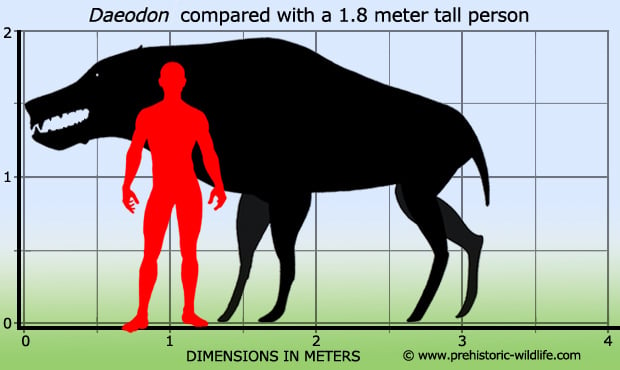In my posts on a science fantasy truth behind Greek mythology, I've given some pretty science fictional remaking of classic monsters, but the "truth" behind the monster need not always be elaborate. It's just more science-based and less mythological. Here are couple of easy ones that are more prosaic--and more pulpy, maybe.
Giant Boar
Greek myth has at least three giant boars: Calydonian, Crommyonian, and Erymanthian. While giant boars are relatively "realistic" as it is, there's no reason to hypothesize genetically engineered giants, as we've got a real animal (or a family of animals) close enough to fit the bill: the
dinohyus ("terrible pig") and the whole enteledont family.
Dinohyus was 12 ft long and 5' 1" at the shoulder. That's plenty to give Heracles a challenge!
Satyr
The familiar image of the satyr of a half-goat, half-man creature is a later invention. The original conception was of a some hirsute guy with big ears, a pug nose, and a goat-like tail.
 |
| A Hellenistic era satyr |
In other words, not really much different (except for the tail) from the wildman or woodwose--in other words, the cryptozoological
hairy hominid. Further supporting this idea, is that the
Libyan satyrs and satyrs described living on the
Satyride Islands off the coast of Africa, seem pretty clearly to be monkeys or apes.
Drakones
Last but not least are the drakones or dragons. These are almost always depicted as just as big snakes in Greek art. Not as cool as modern conceptions of dragon? Well, it was good enough for Conan! And there's
titanoboa upping the ante on very real world giant serpents.




























